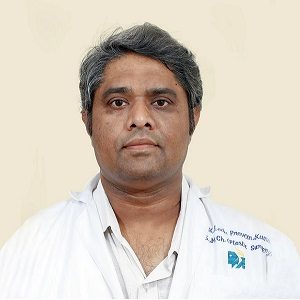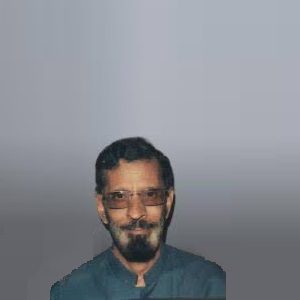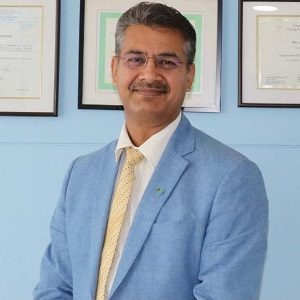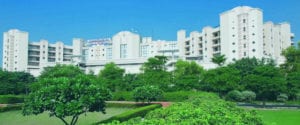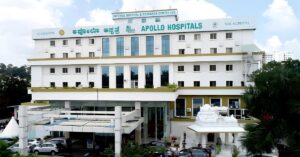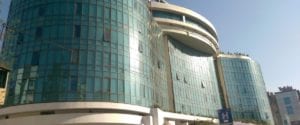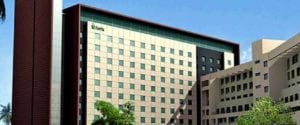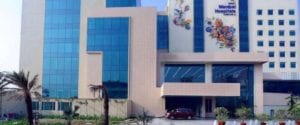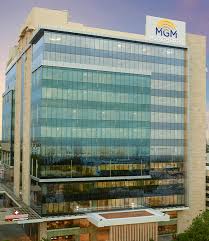Best Doctors in India for Face Lift
- Plastic Surgeon and Cosmetic Surgeon, Chennai, India
- Over 22 years’ experience
- Apollo Hospitals Greams Road
Profile Highlights:
- Dr. Leela Praveen Kumar is one of the top Plastic Surgeons in Chennai with more than 22 years of dedicated experience.
- The doctor is frequently visited by the patients for Breast implants, Vaser Liposuction, rhinoplasty, facelift, Breast Reduction, Bariatric Surgery, Microsurgery, Body contouring, Hand surgery, and Onco Reconstruction.
- Dr. Leela Praveen Kumar also manages a non-Surgical fat reduction procedure, known as Cryolipolysis.
- Plastic Surgeon and Cosmetic Surgeon, Chennai, India
- Over 40 years’ experience
- Apollo Hospitals Greams Road
Profile Highlights:
- Dr. Sundararajan M S is one of the best Plastic Surgeons in India, having practiced for more than 40 years.
- The doctor offers lipo filling, body contouring, non-Surgical facelift, tummy tuck, implants, etc.
- Dr. Sundarajan bagged the Best paper award in 2008 & 2013 and the other Gold Medal for his contribution to the field.
- Plastic, Aesthetic and Reconstructive Surgeon, Gurugram, India
- 25 + years’ experience
- Medanta-The Medicity, Gurgaon
Profile Highlights:
- Dr. Aditya Aggarwal is a distinguished plastic surgeon with a career spanning over 25 years, currently serving as the Vice Chairman of the Department of Plastic, Aesthetic, and Reconstructive Surgery at Medanta The Medicity.
- Dr. Aggarwal’s expertise in cosmetic and reconstructive surgery has earned him both national and international acclaim.
- Dr. Aggarwal’s medical journey began with training at the prestigious IMS BHU Varanasi and KGMC Lucknow (now KGMU), followed by advanced fellowships in Taiwan, Japan, the United Kingdom, and Germany.
Best Hospitals in India for Face Lift
Hospital Highlights:
- Apollo Hospitals is a private healthcare group in India, with its headquarters based in Chennai. Established in 1983 by Dr. Prathap C. Reddy, the group offers a wide range of medical treatments and services across various specialties.
- It is renowned for emphasizing innovation and utilizing cutting-edge medical technologies into patient treatment.
- Known as India’s first corporate hospital, Apollo Hospitals is often credited for pioneering the private healthcare revolution in the country.
- With clinics and hospitals located all throughout India, Apollo Hospitals is a nationwide healthcare organization. Its presence can also be found in foreign countries.
- Preventive health examinations, medical and surgical treatment, and diagnostic centres are just a few of the services that the Apollo group provides.
- The group has several centres of expertise, including Cardiac Sciences, Neurosciences, Orthopedics, Emergency Care, Cancer Care, and Organ Transplantation.
- City: Chennai, India
Hospital Highlights:
- RIMC is a multi-specialty hospital in a sprawling area of 36 acres located in Chromepet, Chennai, Tamil Nadu, India.
- The facility has 450 beds including 130 critical care beds, 9 operating rooms, modern reference laboratories and radiology services, and is conveniently located near road, rail and air transportation.
- RIMC is led and managed by world-renowned physicians committed to healthcare.
- RIMC offers the broadest range of clinical care, education, and research. The hospital offers state-of-the-art technology and modern treatment facilities designed to provide health care at an affordable cost.
- Rela Institute is driven by patient needs, comfort and confidence.
- City: New Delhi, India
Hospital Highlights:
- Fortis Hospital in Shalimar Bagh is a multi-super specialty hospital that strives to provide world-class patient care by leaving no stone unturned.
- Fortis, Shalimar Bagh, with 262 beds and a 7.34-acre footprint, provides the best level of medical care through its team of doctors, nurses, technicians, and management professionals.
- City: Bengaluru, India
Hospital Highlights:
- Established in 2007, the Apollo Hospitals Bangalore is a 300-bed multispecialty hospital situated in Bannerghatta Road, Bangalore.
- Equipped with the state-of-the-art technology, it is a leading hospital dedicated to providing healthcare needs to patients with compassion and expertise.
- It is the first hospital to have completed the highest number of Robot Assisted Heart Surgeries in India.
- Over the years, it has successfully conducted some of the rarest medical procedures such as spinal angiolipoma excision, autologous chondrocyte implantations, and tibial tuberosity shift with MPSL reconstruction.
- The Apollo Hospitals Bangalore has the reputation of performing the greatest series of airway stents in the country.
- Additionally, the hospital is known for providing comprehensive treatment in specialties such as gastroenterology, urology, gynecology, oncology, colorectal surgery, etc.
- The “The Minimal Access Surgery Centre” (MASC), one of Apollo Hospitals, Bangalore’s premier Centres of Excellence, is devoted to the use of minimally invasive surgical procedures.
- In 2013, THE WEEK-A C Nielsen, Best Hospital Survey ranked Apollo Hospitals Bangalore as the 2nd best multi-speciality hospital in Bangalore.
- City: Mumbai, India
Hospital Highlights:
- Gleneagles Global Hospital The 450-bed facility comprises of 17-stories, housing state-of-the-art infrastructure, and advanced medical care facilities.
- The hospital offers end-to-end clinical, surgical, and diagnostic services. It is equipped with a team of eminent medical professionals aided by qualified nurses and medical staff
- The Hospital offers advanced Endoscopic procedures, Hepatobiliary and Liver Surgeries, Surgical and Medical Gastroenterology, Bariatric Surgery, and Robotic surgery.
- The hospital is a center of excellence for Orthopedics, Joint Replacement, Knee Replacement, and Hip Replacement surgery.
- City: Hyderabad, India
Hospital Highlights:
- CARE Hospitals were established in the year 2000, by CARE Group.
- The multispecialty hospital has 435 beds, including 120 critical care beds, with an annual inflow of 180000 outpatients and 16,000 in-patients.
- The hospital provides specialty medical services in Cardiology, Cardiothoracic Surgery, Pediatric Cardiology, Pediatric Cardiothoracic Surgery, Neurology, Neurosurgery, Nephrology, and Urology.
- The hospital has the first dual source, 128 slice CT scanner (for high precision cardiac imaging) – the first of its kind in south India.
- The hospital offers a wide range of accommodation facilities for the convenience of its varied patient base, ranging from general wards to super deluxe rooms.
- City: Mumbai, India
Hospital Highlights:
- Fortis Hospital in Mulund is a 315-bed multi-speciality tertiary care hospital with five JCI accreditations that offers a wide variety of diagnostic and treatment services. The Fortis Hospital in Mulund delivers patient-centred treatment with cutting-edge technology, highly skilled and experienced surgeons, and paramedical staff.
- This institution houses Maharashtra’s largest multi-organ transplant centre. It is also the first heart transplant centre in western India to conduct 100 or more consecutive heart transplants in under four years. It is the only hospital in the city to have multi-organ transplants and has handled the youngest patient for angioplasty. Fortis Hospital Mulund now boasts the first advanced surgical robot in central Mumbai.
- Cardiology and heart surgery, urology, nephrology, neurosciences, orthopaedics, digestive care, emergency and critical care, and maternity care are among the services provided by the hospital.
- City: New Delhi, India
Hospital Highlights:
- Manipal Hospitals, Dwarka, is a super-specialty hospital in Dwarka, New Delhi, which is a part of Manipal Hospitals Group.
- The hospital aims to provide the best treatment on par with international standards at a fraction of the cost.
- Equipped with 380 beds, the hospital is also one of the new age hospitals which are equipped fully with state-of-the-art infrastructure, cutting-edge technology as well as the latest and advanced clinical practices. The hospital also has 13 modular Operation theatres with 118 beds which are solely meant for critical care.
- The hospital comprises internationally acclaimed doctors and highly professional and experienced hospital and medical staff who are able to provide preventive, therapeutic, and diagnostic services all under one roof.
- City: Chennai, India
Hospital Highlights:
- Located in Chennai, India, MGM Healthcare is a top multispecialty hospital that provides all medical services under one roof.
- Since its founding in 2019, MGM Healthcare has quickly become a leading national referral centre, creating several innovative flagship initiatives.
- MGM Healthcare combines next-generation medical and digital technologies to provide better patient results.
- With 12 centres of excellence, more than 400 inpatient beds, 100 intensive care unit beds, and 24/7 emergency care, MGM Healthcare leaves no chance in redefining the patient experience in Chennai.
- MGM Healthcare boasts 250+ expert doctors across 30+ departments, including Cardiology, Pulmonology, Neurology, Obstetrics & Gynaecology, and more.
- They house 12 specialized Centres of Excellence, including Neurosciences, Orthopaedics, and Multi-Organ Transplantation.
- Their team of doctors, nurses, and paramedics works together to give every patient individualized treatment.
Hospital Highlights:
- Lilavati Hospital & Research Centre is India’s premier multi-speciality tertiary care hospital and has been recognised as a global medical excellence centre.
- Lilavati Hospital & Research Centre has built an unrivalled level of trust with its patients over the years, thanks to a solid foundation that comprises cutting-edge facilities, the best medical competence, research, education, and charity endeavours.
- The hospital is quite proud of the fact that it now serves patients from all kinds of backgrounds, not just from the United States but from all around the world.
- The hospital has a total of 323 beds, one of the largest Intensive Care Units (ICUs), 12 Operation Theatres with modern amenities, over 300 consultants, and almost 1,800 personnel.
FACE LIFT
Face-lift also termed as rhytidectomy is a cosmetic surgical procedure that can make your face have a younger appearance by tightening the facial tissues. This procedure reduces the sagging or folds of skin on the cheeks and jawline and any other such changes in your face that can occur with age.
Neck lift, termed as platysmaplasty, is usually done as part of this procedure, as it helps to reduce fat deposits as well as sagging skins on the neck.
It is to be noted that a face-lift will not decrease fine creases, damage from sun exposure or any kind of wrinkles in your skin.
Purpose
As we get older, the appearance as well as the shape of our face is altered due to age-related changes. The skin eventually loses its elasticity and becomes loose. Fat deposits can decrease in some areas of the face and increase in others. A face-lift can help you reduce age-related changes in your face, which includes:
- Sagging appearance of your cheeks
- Deepening of the fold of the skin from the side of the nose to the corner of the mouth
- Excess skin at the lower jawline
- Sagging skin and excess fat in your neck (if a neck lift is included in your procedure).
Preparation
Preparing for a facelift is similar to preparing for any kind of surgery. Before the surgery, your doctor may ask you for presurgical evaluation and might ask you to stop taking certain medications or adjust the dosage before your procedure.
Your doctor can ask also you to:
- Stop smoking.
- Discontinue using aspirin, any kind of anti-inflammatory pain relievers, as well as any herbal supplements which can reduce the risk of bleeding and bruising
- Apply specific products to your face before your procedure
Your plastic surgeon will also need to take photos of your face from multiple angles as well as close-up photos of some features. The surgeon will then examine your bone structure as well, the shape of your face, fat distribution and skin quality, as it will help him/her determine the best options for your face-lift. You will also need to talk to him/her regarding your expectations for the outcomes of the procedure.
The procedure can take place at a surgical center or at the hospital, and you will need someone to drive you to and from the center as it is likely that you will be under general anesthesia. It’s better if you can arrange for someone to stay with you for a night or two after the procedure as well.
Procedure
Generally, a face-lift involves elevating the skin and tightening the underlying tissues and muscles. Fat located in your neck and face may be removed, sculpted or redistributed. Then the facial skin is re-draped over the newly repositioned contours of your face and any excess skin is removed, after which the wound is stitched or taped closed.
The incisions for the procedure will depend on the techniques that will be used as well as the patient’s preferences. Options include:
Traditional face-lift incision
A traditional face-lift incision begins at your temples in the hairline and continues down and around the front of your ears and ends behind your ears in the lower scalp. An incision might be created under your chin as this can improve the appearance of your neck.
Limited incision
Limited incision is a shorter incision that starts in your hairline just above your ear and wraps around the front of your ear. However, it does not extend all the way into your lower scalp.
Neck lift incision
Neck lift incision begins in front of your earlobe and continues around your ear into the lower scalp. A small incision is created under the chin as well.
A face-lift should take between two to four hours. However, if other procedures are included, it should take longer.
After the procedure
After a face-lift, you can experience the following:
- Mild to moderate pain
- Swelling
- Bruising
- Numbness
- Drainage from the incisions
Contact your doctor soon if you have:
- Severe pain on one side of your face or neck after around 24 hours of surgery
- Shortness of breath
- Irregular heartbeats
- Chest pain
Your incisions might be covered with the help of bandages that can provide gentle pressure for minimizing bruising and swelling. A small tube may be placed under your skin behind one or both of your ears for draining any excess fluid or blood.
- Following your surgery, for a few days:
- You need to keep your head elevated after the surgery
- Take pain medication that your doctor recommends
- Apply a few cool packs to your face as it can ease pain and reduce swelling
You will have multiple follow-up appointments scheduled during the next two months after your surgery. They will include the following:
- The day after your surgery, your surgeon may need to remove your drainage tube and apply antibiotic ointment to your incisions as well as place new bandages on your face.
- Around two to three days after the face-lift, you might be able to switch from wearing bandages to wearing an elasticized facial sling.
- Around one week after your surgery, your doctor will be removing your stitches and assess the wound.
- Subsequent visits may be scheduled for monitoring your progress.
Recovery
Self-care at home is important for the first three weeks after the face-lift as this will aid your recovery and minimize the risk of complications:
- Follow instructions related to wound care as directed by your surgeon
- Follow instructions regarding when you can start using shampoo, soaps and of what kind
- Do not pick at crusting scabs that might develop on your wound
- It is better to wear clothes that fasten in the front rather than clothes that require to be pulled over the head
- Avoid too much pressure or motion on and around your incisions
- Avoid sports or any kind of vigorous or aerobic activity
- Avoid using any makeup
- Avoid direct sun exposure to the incision for at least three weeks and use a sunscreen thereafter
- Avoid coloring and bleaching your hair for at least six weeks after the procedure
During your recovery period after the face-lift, you can style your hair to hide any remaining signs of the incision. You can choose to delay attending any major social events for a couple of months as well.
It is important to remember that the results of a face-lift are not permanent. With age, the facial skin can begin to droop again, though generally, a face-lift should last around ten years.
Risks
Like any other medical procedure, there are few risks to a facelift, which includes:
- bleeding
- infection
- blood clots
- anesthesia risks
- cardiac events
- pain or scarring
- hair loss at the incision sites
- problems with wound healing
- prolonged swelling

